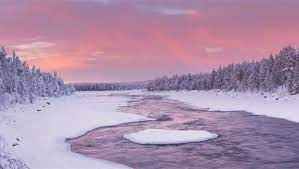Blizzards
"Blizzard vs. Snowstorm: Understanding the Difference"
A blizzard is an extreme weather condition characterized by strong winds, low temperatures, and heavy snowfall, often leading to reduced visibility and dangerous travel conditions. Blizzards typically occur in cold regions, such as polar or mountainous areas, but they can also affect temperate regions during winter storms.
Key features of a blizzard include:
Snowfall: Blizzards are defined by the amount of snowfall they produce. The snowfall during a blizzard can vary, but it is typically heavy and can accumulate quickly.

High Winds: Blizzards are accompanied by strong winds, often exceeding 35 miles per hour (56 kilometers per hour). These winds can create drifting snow, reducing visibility and making travel extremely hazardous.
Reduced Visibility: The combination of heavy snowfall and high winds leads to reduced visibility, sometimes to the point where it's nearly impossible to see more than a few feet in front of you. This makes blizzards particularly dangerous for drivers and pedestrians.
Low Temperatures: Blizzards are associated with cold temperatures, often well below freezing. These low temperatures can lead to frostbite and hypothermia for those caught in the storm without adequate protection.
Duration: Blizzards can last for several hours or even days, depending on the strength of the storm system. The prolonged duration can lead to significant snow accumulation and more significant disruptions.
Impact: Blizzards can have a range of impacts, including disrupting transportation, causing power outages, and posing a danger to human and animal life. Preparations, such as stocking up on supplies and staying indoors, are essential to stay safe during a blizzard.
Blowing Snow: The combination of strong winds and heavy snowfall results in blowing snow, which can obscure visibility even further and create snowdrifts that block roads and entrances.
Blizzards are a serious weather phenomenon that require careful preparation and caution. It's important to stay informed about weather forecasts and warnings during the winter months and to take appropriate measures to stay safe when a blizzard is approaching. This may include staying indoors, having emergency supplies on hand, and avoiding unnecessary travel until the storm has passed.
A blizzard is an extreme weather condition characterized by strong winds, low temperatures, and heavy snowfall, often leading to reduced visibility and dangerous travel conditions. Blizzards typically occur in cold regions, such as polar or mountainous areas, but they can also affect temperate regions during winter storms.
Key features of a blizzard include:
Snowfall: Blizzards are defined by the amount of snowfall they produce. The snowfall during a blizzard can vary, but it is typically heavy and can accumulate quickly.

High Winds: Blizzards are accompanied by strong winds, often exceeding 35 miles per hour (56 kilometers per hour). These winds can create drifting snow, reducing visibility and making travel extremely hazardous.
Reduced Visibility: The combination of heavy snowfall and high winds leads to reduced visibility, sometimes to the point where it's nearly impossible to see more than a few feet in front of you. This makes blizzards particularly dangerous for drivers and pedestrians.
Low Temperatures: Blizzards are associated with cold temperatures, often well below freezing. These low temperatures can lead to frostbite and hypothermia for those caught in the storm without adequate protection.
Duration: Blizzards can last for several hours or even days, depending on the strength of the storm system. The prolonged duration can lead to significant snow accumulation and more significant disruptions.
Impact: Blizzards can have a range of impacts, including disrupting transportation, causing power outages, and posing a danger to human and animal life. Preparations, such as stocking up on supplies and staying indoors, are essential to stay safe during a blizzard.
Blowing Snow: The combination of strong winds and heavy snowfall results in blowing snow, which can obscure visibility even further and create snowdrifts that block roads and entrances.
Blizzards are a serious weather phenomenon that require careful preparation and caution. It's important to stay informed about weather forecasts and warnings during the winter months and to take appropriate measures to stay safe when a blizzard is approaching. This may include staying indoors, having emergency supplies on hand, and avoiding unnecessary travel until the storm has passed.
#Blizzard
#WinterStorm
#Snowstorm
#Snowfall
#StayWarm
#WeatherAlert
#BlizzardSurvival
#WinterDriving
#WinterStorm
#Snowstorm
#Snowfall
#StayWarm
#WeatherAlert
#BlizzardSurvival
#WinterDriving



Comments
Post a Comment